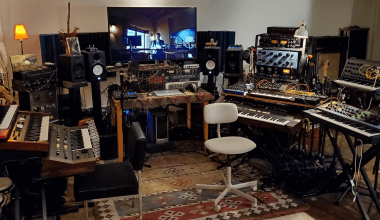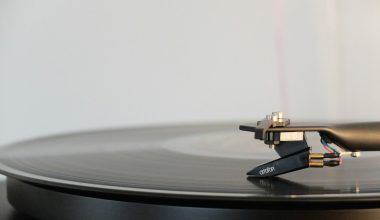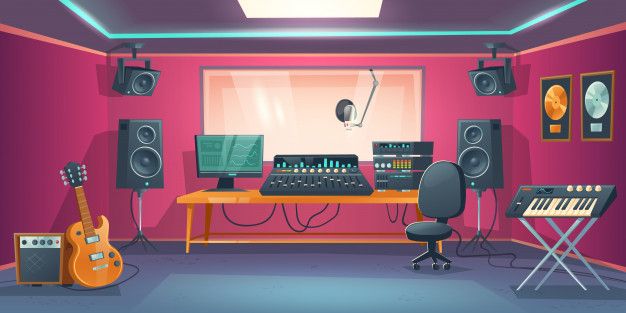Why Audio Quality is Key to Your Music’s Success
Imagine this: You’ve poured your heart into a song, written heartfelt lyrics, and composed a melody that moves you. But when someone listens to it, they’re distracted by poor sound quality. Disappointing, isn’t it? This is why having the best audio quality matters.
Great audio quality makes your music shine. It lets every beat, lyric, and melody touch your listener’s heart. Whether you’re making a dance track or an emotional ballad, your audience deserves to hear your music at its very best.
In this blog, we’ll walk you through everything you need to know about achieving the best audio quality, from recording your songs to distributing them on top platforms like Spotify or Apple Music.
Chapter 1: What Does the Best Audio Quality Mean?
Before we dive into tips, let’s understand what “audio quality” means. Simply put, it’s how good your music sounds to the human ear. Audio quality depends on several things, like:
- Clarity: Can you hear every word and note clearly?
- Balance: Do the instruments and vocals sound harmonious?
- Consistency: Does the song sound good on all devices, like phones, speakers, and headphones?
The best audio quality is about ensuring that your music sounds perfect, no matter where or how it’s played.
Chapter 2: The Foundation of Great Audio – Recording
1. Use the Right Equipment
Getting the best audio quality starts with the right tools. Here’s what you’ll need:
- Microphone: A good-quality mic is essential for capturing clear vocals or instruments.
- Audio Interface: This connects your microphone to your computer and keeps the sound crisp.
- Headphones: Use professional headphones to monitor your recordings accurately.
2. Set Up Your Recording Space
Your room matters more than you think. A bad environment can ruin your recordings.
- Choose a quiet place with minimal background noise.
- Add some cushions or curtains to reduce echoes.
- If possible, invest in acoustic panels.
3. Master Your Recording Technique
- Keep the mic at the right distance (about 6-8 inches from your mouth).
- Record in short takes to reduce mistakes.
- Always test your levels before starting. Avoid “clipping,” which is when the sound gets too loud and distorts.
Chapter 3: Mixing – Shaping Your Song
Mixing is where your recorded sounds are blended together to make them shine. It’s like cooking a dish – every ingredient (or instrument) needs to be balanced.
1. Equalize (EQ) Your Sounds
- Remove unwanted frequencies. For example, cut out the low rumbles from vocals.
- Boost the important parts. Make the vocals and main instruments stand out.
2. Add Effects Carefully
- Use reverb and delay to add depth, but don’t overdo it.
- Use panning to spread sounds across left and right speakers, making the mix more dynamic.
3. Keep Levels Balanced
Make sure no part of the track is too loud or too quiet. Aim for consistency so the listener isn’t constantly adjusting their volume.
Chapter 4: Mastering – The Final Polish
Mastering takes your mixed track and makes it sound professional. It’s the final step before releasing your song.
How to Master Your Music for the Best Audio Quality
- Normalize Loudness: Match your track’s volume to industry standards.
- Add Compression: This ensures that quieter parts aren’t drowned out by louder ones.
- Enhance Clarity: Use tools like limiters and EQ to make the track crisp.
Chapter 5: Avoiding Common Audio Mistakes
Even experienced artists make mistakes that can hurt audio quality. Watch out for these:
- Background Noise: Make sure to eliminate any hums, clicks, or pops during recording.
- Over-Compression: Too much compression can make your track sound lifeless.
- Low-Quality Exports: Always export your tracks in high-quality formats like WAV or FLAC.
Chapter 6: How to Distribute Music Without Losing Quality
Once your music is ready, the next step is sharing it with the world. But did you know that some platforms compress audio files, reducing their quality? To ensure your audience hears your music at its best, follow these tips:
- Choose a Reliable Distributor
Platforms like Deliver My Tune ensure that your music reaches listeners in its original quality. They distribute to over 100 platforms, including Spotify, Apple Music, and YouTube. - Upload High-Resolution Files
Always upload your tracks in lossless formats like WAV or FLAC. Avoid MP3s, as they’re compressed and may lose detail.Your room matters more than you think. - Double-Check Metadata
Ensure your song titles, artist name, and album details are accurate. Metadata errors can lead to rejections or delays.Your room matters more than you think.
Chapter 7: Tools and Services to Improve Audio Quality
AI Mastering Services
AI mastering tools like those offered by Deliver My Tune can save you time and money. With just a few clicks, you can enhance your track’s clarity, loudness, and balance.
Essential Plugins for Beginners
- EQ Plugins: To balance frequencies.
- Reverb Plugins: To add depth and ambiance.
- Limiter Plugins: To prevent your track from distorting.
Chapter 8: Why High-Quality Audio Builds a Loyal Fanbase
When your music sounds professional, it creates a connection with your listeners. People are more likely to replay and recommend tracks that sound good. Additionally, great audio quality increases your chances of getting featured on playlists, which can skyrocket your streams and visibility.
Chapter 9: Do-It-Yourself or Go Professional?
If you’re just starting out, you can try recording and mixing on your own. But as your career grows, consider outsourcing to professionals. Platforms like Deliver My Tune offer affordable packages for mastering, distribution, and even social media management.
Chapter 10: Taking Action – Your Audio Quality Journey
Now that you understand how to achieve the best audio quality, it’s time to take action. Whether it’s investing in better gear, learning new techniques, or using professional services, every step you take brings you closer to creating music that resonates with your audience.
What’s Next?
- Record your next track with care.
- Try a mastering service like Deliver My Tune.
- Distribute your music confidently, knowing it sounds its best.
Conclusion: Make Every Note Count
Music is about emotion, connection, and expression. But to truly connect with your audience, you need the best audio quality. Follow the steps in this guide, and your music will not just be heard – it will be felt.
With tools, tips, and services at your fingertips, there’s no excuse to settle for less. Start your journey today and let your music reach its full potential.
Related Articles:
For further reading, explore these related articles:
- The Complete Guide to Song Promotion: How to Make Your Music Shine
- Promo Cards on Spotify: A Game Changer for Artists
- How to Upload Audio on Instagram: An Easy Guide for Everyone
For additional resources on music marketing and distribution, visit Deliver My Tune.






